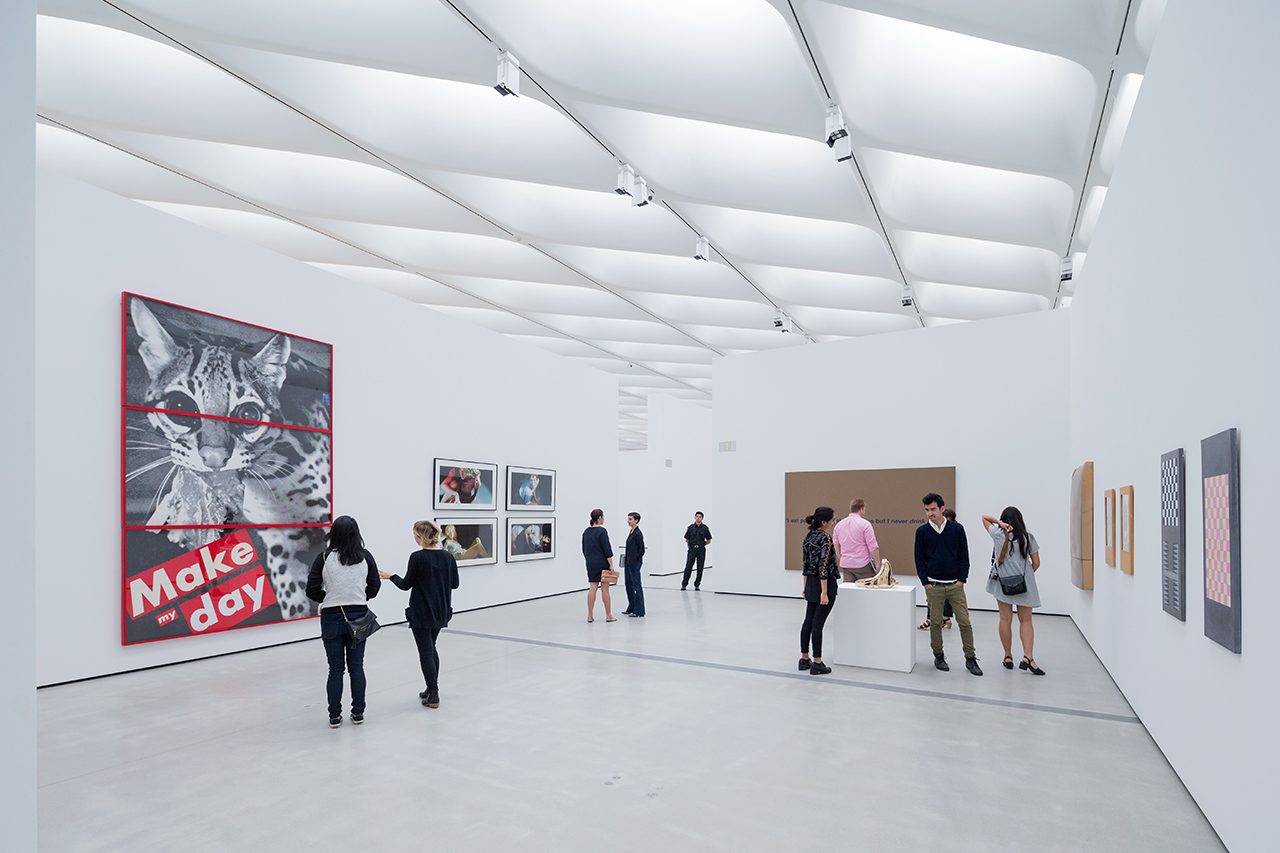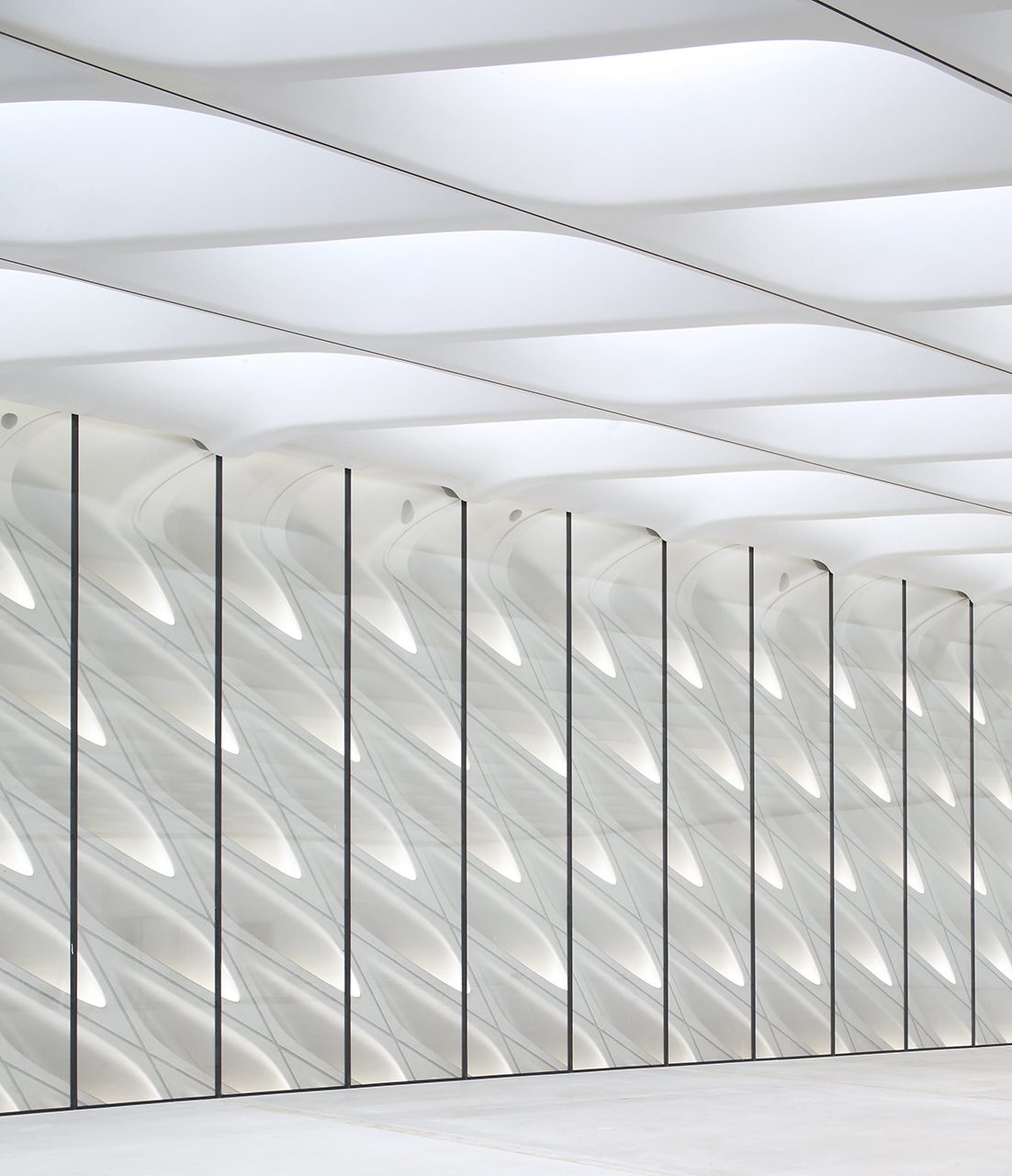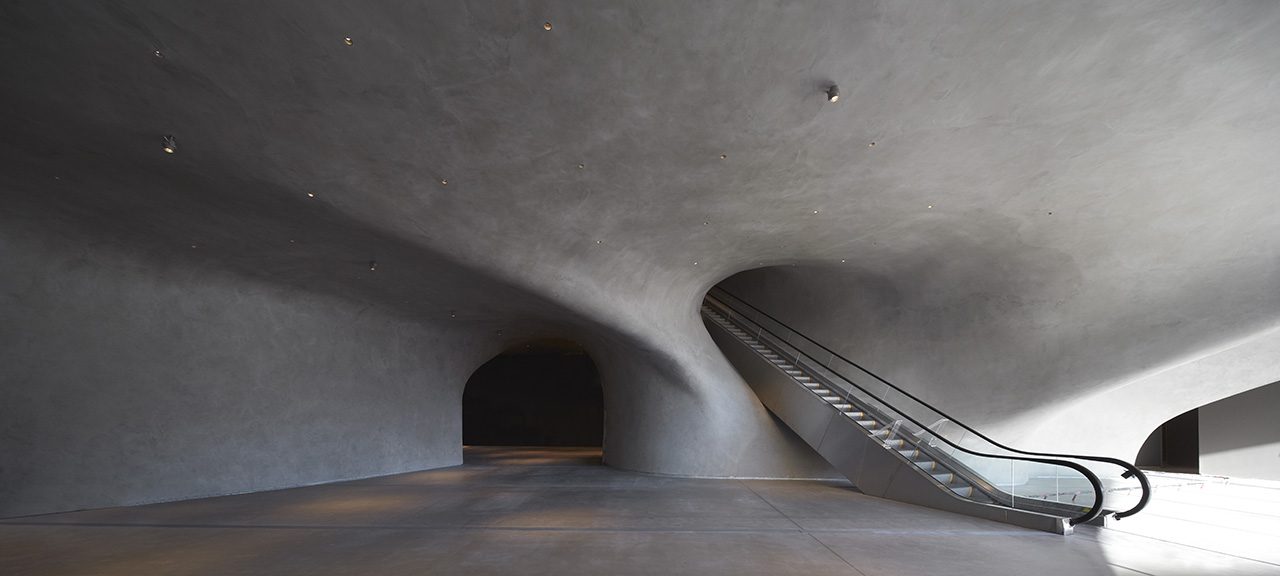The interiors of the Broad Museum, the long-awaited Diller Scofidio + Renfro design that opened in Downtown L.A. in September 2015 were shaped to serve the architects’ two main goals: to tame the gorgeous Southern California sun into a reliably even interior source of light, and to provide as much space as possible for the display of sometimes monumental works of art.
When visitors first enter the museum, they are greeted by a curvaceously womb-like lobby made of a grey Venetian plaster brushed to a soft, matte surface that is shaped by the organic central art storage space known as the vault. They’ll then shoot through the ceiling via escalator and arrive on the top floor, a pure-white, 35,000-square-foot, column-less gallery illuminated by deftly controlled natural light.

DS+R principal Elizabeth Diller described the two spaces, saying, “The coloration is very much part of this choreographic idea of taking the light level down in the lobby and then up to this sublime field of light that is very even at the top.” The evenness of the top-floor gallery was made possible by the meticulously engineered ten-foot-deep skylights and sidelights that comprise the building’s porous outer veil, angled to face due north in order to protect the artworks from any direct sunlight.


With the circulation limited to the center of the building and all load-bearing structures pushed to the perimeter, the gallery was left with nearly an acre of endless exhibition space, where temporary walls could go up or down. “There’s no fat,” Diller said, pointing out that most museums net about 30 percent gallery space, the rest being lost to corridors and staircases. The result is more room to accommodate the large-scale Jeff Koons sculptures and Ellsworth Kelly paintings that have been waiting to get out of the museum’s vault.
